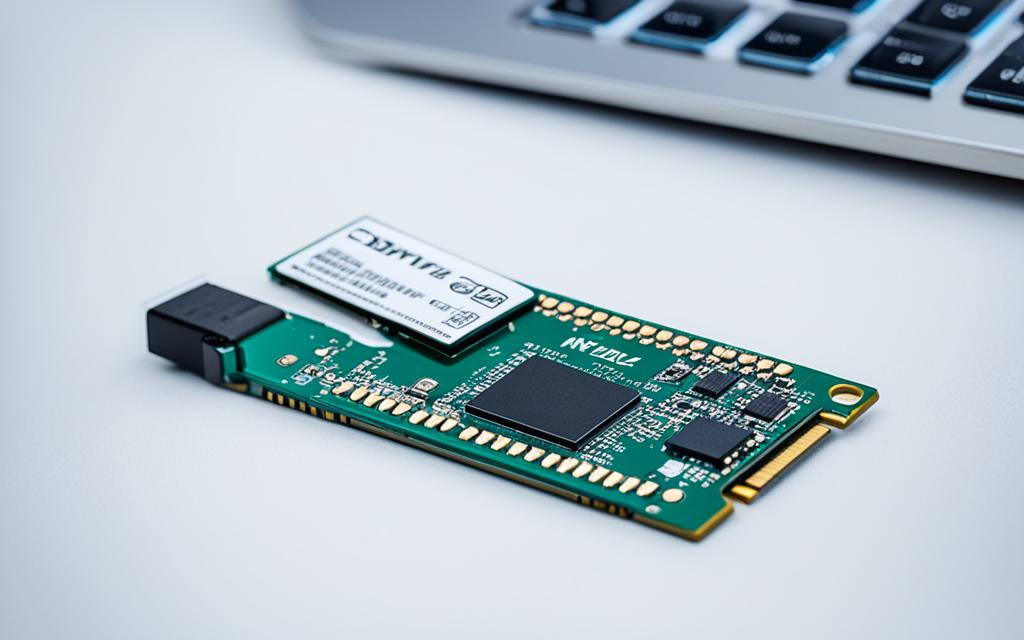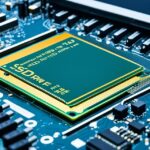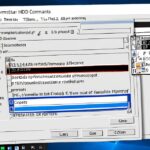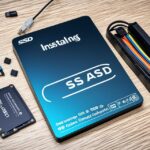Table of Contents
Optimising storage solutions today is key to top performance. If you want to boost your computing experience, learning to correctly format a new M.2 SSD is vital. This guide will give you all the knowledge you need for setting up an M.2 SSD properly. It will make sure your drive works at its best. Formatting a new M.2 SSD improves speed and reliability. This is especially important in modern computing, where getting the most out of your SSD is essential. By the end of this guide, you’ll know how to format your device. This allows you to get the most out of your new M.2 SSD. Don’t miss this opportunity to improve your storage!
Key Takeaways
- Understanding the significance of M.2 SSDs in boosting overall system performance.
- Recognising the faster formatting process specific to SSDs compared to traditional drives1.
- Appreciating the importance of Quick Format to extend the lifespan of your M.2 SSD1.
- Identifying NTFS and exFAT as primary file systems for optimal formatting of SSDs2.
- Utilising manufacturer-specific tools to securely erase data before disposing of or selling an SSD2.
- Understanding recommended storage specifications for adding M.2 SSDs to PS5 consoles3.
Understanding M.2 SSDs and Their Importance
M.2 SSDs are a big leap in storage technology. They bring a compact solution for today’s computer needs. These drives are small, like a stick of gum, perfect for laptops and ultrabooks. They are versatile too, working with both PCIe and SATA. This makes them popular in many fields.
What is an M.2 SSD?
M.2 SSDs come in different sizes. You might find ones that are 22mm wide and 60mm or 80mm long. They’re smaller than old SSDs, which allows for more creative designs. They use interfaces like SATA and NVMe. SATA models have a speed limit of 6Gbps. NVMe models, however, can go up to 20Gbps45. This makes M.2 SSDs great for tasks that need quick data access.
Advantages of Using an M.2 SSD
M.2 SSDs offer many benefits thanks to their compact size. They make for sleek computers without losing speed. NVMe drives are really fast, hitting speeds of 3,500MB/s. SATA III drives reach up to 600MB/s4. Also, you can get M.2 SSDs with up to 2TB of space. This is perfect for gaming or creating content56.
Remember, the generation of PCIe impacts speed too. M.2 NVMe SSDs using PCIe 4.0 are even faster. They’re great as primary storage. They help your computer start quickly and run more efficiently. This speed makes games and applications load faster, offering an edge in competitions46.
The Benefits of Formatting Your M.2 SSD
It’s important to know why formatting SSD is a good idea for anyone wishing to boost their device’s function. By formatting your M.2 SSD, you make sure your data is secure, especially if you’re selling or giving the drive a new purpose. This process deletes all unnecessary files and improves the storage system for enhanced performance. Understanding the value of formatting SSD, whether it’s for a new OS or a fresh start, is key.
Why Format Your M.2 SSD?
Formatting your M.2 SSD ensures your data is stored and accessed in the best way. A drive that’s formatted correctly avoids problems with storage that’s not set up right, keeping data safe7. This is especially vital when the drive is going to someone else7. It also makes room for new data and confirms your SSD uses the best file system, like FAT32, NTFS, or APFS.
Enhancing Performance Through Formatting
When you format an SSD, it works better by getting rid of temporary files and data clutter. Research indicates formatting your M.2 SSD, especially with ASUS motherboards, boosts system efficiency8. Drives that are formatted often work faster, are more power-efficient, and last longer. This allows users to get the most from their SSD. Tools like AOMEI Backupper or system utilities can help format your M.2 SSD regularly for ongoing improvements89.
How to Format New M.2 SSD
Getting your new M.2 SSD ready is key for it to work well with your computer. It’s the first step to make sure the SSD works smoothly.
Preparing Your System for Formatting
Before you start formatting, check a few things. Make sure your motherboard can work with M.2 drives. Also, back up any files on the SSD because formatting will remove everything.
Choosing the Right File System
The file system you pick depends on how you’ll use the SSD. NTFS is best for Windows and big files over 4GB. FAT32 works well with other systems. Knowing the right way to format your M.2 SSD can make it perform better.
Step-by-Step Formatting Process on Windows
To format your M.2 SSD on Windows, follow these easy steps:
- Open Disk Management by right-clicking on the Start button.
- Find your M.2 SSD, which might be listed as unallocated space.
- Right-click on it and choose New Simple Volume.
- Use the wizard to set the size of the volume.
- Select the file system (NTFS or FAT32) and finish the formatting.
- Other methods like EaseUS Partition Master or Command Prompt can also format your M.2 SSD.
This process usually takes about 5 minutes to finish. It’s a quick way to get your SSD ready for Windows (learn more here)10.
Formatting M.2 SSD on macOS
If you’re a Mac user, use Disk Utility to format the SSD. First, connect the SSD and open Disk Utility from Applications. Select the SSD, click Erase, pick a file system, and complete the setup. M.2 SSDs can be prepared quickly, enhancing your computer’s performance.
| Formatting Method | Steps Involved | Estimated Time |
|---|---|---|
| Disk Management | 6 steps to follow | Approximately 5 minutes |
| EaseUS Partition Master | 8 steps in total | Approximately 5 minutes |
| Command Prompt | 7 steps required | Approximately 5 minutes |
These methods are critical in the SSD formatting journey. They make sure data flows well and users get the best performance.
M.2 SSDs are becoming more popular because they are very efficient. Thanks to NVMe, they offer faster read and write speeds than other SSDs. So, it’s important to set them up properly1112.
Common Tools and Utilities for Formatting
Formatting a new M.2 SSD is easy with the right tools. You can choose from EaseUS Partition Master, Windows Disk Management, and options from Command Prompt and BIOS. Each tool is made for different levels of user expertise.
Using EaseUS Partition Master
EaseUS Partition Master is a top choice for formatting NVMe SSDs. It’s easy to use and works well with various file systems. You can find it here: recommended for different devices. Most people will find quick formatting enough, but full formatting is there for extra security. It writes over old data with zeros. Besides formatting, it keeps your SSD running smoothly with features like TRIM13.
Formatting via Windows Disk Management
For hardware management, Windows Disk Management is a solid choice. It’s part of Windows, so you use it to set up and format partitions easily. Just connect your M.2 SSD, open the utility, and choose to Format. It’s great for those who know their way around Windows and want to keep their storage organised14.
Command Prompt and BIOS Options
Command Prompt or BIOS options are perfect for the tech-savvy. These methods are great for fixing a corrupt drive or adjusting settings not in the GUI. They do require a good knowledge of commands and system settings. So, they’re best suited for experienced users.
Conclusion
Formatting an M.2 SSD is key. It boosts performance and storage efficiency. By backing up data and enabling TRIM, you get the most from your SSD. This SSD formatting summary stresses the importance of proper storage maintenance.
Regularly formatting your M.2 SSD helps keep it running smoothly. It prevents the slowing down of your drive over time. The tips in this guide aim to give users the know-how for effective storage management.
Proper SSD care leads to better performance and extends its life. By following these suggestions, you’re ensuring a stronger digital experience. Such practices keep your SSD ready for all your computing needs151617.
FAQ
What is the main purpose of formatting an M.2 SSD?
Formatting an M.2 SSD makes it ready for use by erasing old data. It helps the SSD run faster and fixes problems like data corruption. Doing this also helps the SSD last longer.
How does an M.2 SSD differ from traditional SSDs?
M.2 SSDs are smaller than the usual 2.5-inch SSDs. This size makes them perfect for new, smaller computers. They use the PCIe interface, offering quicker data transfer and less delay than SATA drives.
What file systems can I choose for my M.2 SSD?
For an M.2 SSD, you can pick NTFS for Windows or FAT32 for broader compatibility. Your choice should match your needs and what devices you use.
Do I need to back up my data before formatting?
Yes, backing up your data is vital before you format. This is because formatting will remove all files permanently. Make sure to save your essential data elsewhere first.
Can I use built-in utilities for formatting my M.2 SSD?
Absolutely! Built-in tools like Windows Disk Management and Disk Utility on macOS are great for formatting. They offer easy methods to manage your SSD effectively.
What advantages do M.2 SSDs offer for gaming and content creation?
For gaming and creating content, M.2 SSDs speed up loading and lower latency. This fast access to large files improves gaming and video editing dramatically.
What should I do if I encounter issues while formatting?
If problems arise during formatting, try Command Prompt or BIOS solutions. Tools like EaseUS Partition Master are also good for detailed formatting options.
Is regular formatting of an M.2 SSD necessary?
Regular formatting isn’t needed, but it can boost performance. It’s good for cleaning out temp files and sorting out data fragments as part of upkeep.
Source Links
- https://www.crucial.com/articles/about-ssd/how-to-format-a-solid-state-drive – How to Format a Solid State Drive (SSD)
- https://www.xda-developers.com/how-reformat-ssd-windows/ – How to reformat an SSD in Windows: A step-by-step guide
- https://www.playstation.com/en-us/support/hardware/ps5-install-m2-ssd/ – How to add an M.2 SSD to a PS5 console (US)
- https://www.kingston.com/en/blog/pc-performance/two-types-m2-vs-ssd – 2 Types of M.2 SSDs: SATA and NVMe- Kingston Technology
- https://www.techtarget.com/searchstorage/definition/M2-SSD – What is an M.2 SSD?
- https://www.atpinc.com/blog/what-is-m.2-M-B-BM-key-socket-3 – What is M.2? Keys and Sockets Explained
- https://www.kingston.com/en/blog/personal-storage/how-to-format-ssd – How to Format Your SSD
- https://www.ubackup.com/articles/how-to-format-m-2-ssd-in-bios-asus-6007-ac.html – How to Format M.2 SSD in BIOS on ASUS: Comprehensive Guide
- https://www.corsair.com/us/en/explorer/diy-builder/storage/how-to-install-an-m2-ssd-for-os-and-games/ – How to install an M.2 SSD for OS and games
- https://www.easeus.com/partition-manager-software/how-to-format-m-2-ssd-in-windows-10.html – How to Format M.2 SSD in Windows 10 [Detailed Instruction]
- https://www.wikihow.com/Format-an-M2-Ssd – How to Format an M.2 SSD Drive on Your PC or Mac
- https://www.diskpart.com/format-disk/how-to-format-m-2-ssd-0725.html – How to Format M.2 SSD on Desktop & Laptop?
- https://www.easeus.com/partition-master/how-to-format-nvme-ssd.html – How to Format NVMe SSD in Windows 10/11 [Full Guide]
- https://www.seagate.com/blog/how-to-install-an-nvme-ssd/ – How to Install & Format your M.2 NVMe SSD | Seagate US
- https://www.diskpart.com/articles/format-nvme-for-windows-10-install-0001.html – How to Format NVMe for Windows 10 Install Safely and Easily
- https://www.easeus.com/partition-master/format-new-ssd.html – How to Format New SSD in Windows 10/11 [100% Working Solutions]
- https://www.diskpart.com/articles/format-nvme-drive-windows-10-0725.html – How to Format NVMe Drive in Windows 10?












